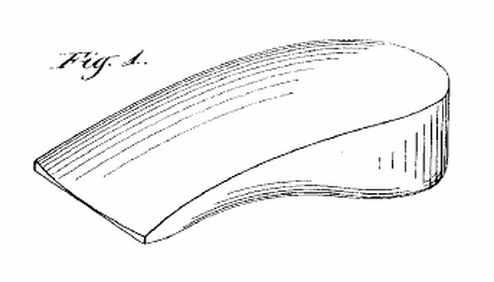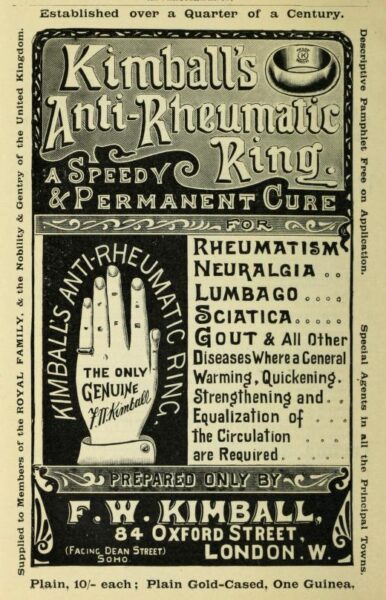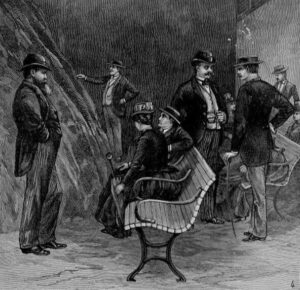From The Standard (London) 10 April 1897
.
Perhaps this is not strictly medical, but I noticed this ad while researching something else, and was intrigued enough to find out more.
The invisible elevators, I discovered, were cork wedges about 1 inch thick, designed to be worn inside your shoes. The image below is of a US version patented in 1896 and exactly matches the description of those sold in the UK by a young entrepreneur called Arthur Lewis Pointing.
The product retailed at 3s 9d per pair, or 5s 6d for a superior version. You had a job to get hold of the cheaper set, however – if you sent in 3s 9d, you would receive a letter saying that they were out of stock but that you could have the higher quality ones if you sent the balance.
The grand-sounding Oriental Toilet Company, 87 Strand, was simply a room hired by Pointing as a place to receive letters, which were collected each day and taken to his other premises where a staff of thirteen young women sent out the replies. Pointing also promoted a wealth of other products under various names and addresses, for example this bust improver ostensibly sold by ‘Madame E. P.’
In 1897, Pointing, 29, was arrested for fraud and brought to trial at Bow Street Police Court. Dissatisfied customers told of the pain occasioned by trying to walk in the elevators, and their futile attempts to get their money back. One of the witnesses was described in various newspaper reports as a ‘diminutive girl’ and ‘a pleasant-looking little domestic servant’ – which can’t have done much for her sensitivity about her height!
To be fair, two witnesses also appeared for the defence, suggesting that the elevators were comfortable and effective, but one of them worked for Pointing and said she had tried the product out of curiosity since the trial began.
Less loyal to her boss was the Oriental Toilet Company’s head clerk, Charlotte Smith, who said that there was no difference between the 3s 9d and the 5s 6d products. She explained how the business worked.
When anyone enquired about the elevators, they would receive a circular sympathising with the plight of short people, who inevitably found themselves ‘decried and treated with a certain amount of contempt and pity.’
‘Many,’ it said, ‘will certainly speak in praise of little women, but few of little men.’ This did not, however, mean that women didn’t need the product:
Little women, provided they are beautifully proportioned and know how to dress daintily, can be, and are, very attractive; but when these little women get past their fresh beauty and become fat or thin their trials begin. We all know how ridiculous it is to see a little fat woman waddling along like a motherly old duck, whereas a tall, stout, middle-aged woman does not look ridiculous at all.
When an order was placed, the customer would receive the out-of-stock letter, and more often than not this resulted in the remittance of the extra 1s 9d. If the customer asked for their money back instead, they would be sent the elevators anyway in the hope that they wouldn’t bother taking the matter further. Persistent complainants were offered a selection of toiletries, or – rather randomly – some liver pills, in exchange for the elevators. If you wanted your 3s 9d back that much, you really had to work for it.
These money-making ploys, however, were not actually illegal. Arthur Pointing might have been dodgy, but the court ruled that he hadn’t committed a criminal offence, and acquitted him.
.
.






As a fairly short girl, I’m not sure whether to be offended or freaked out or intrigued.
The fat mother duck image kind of annoys me. If I put on weight, I have to worry about that?! 🙂 Heh.
Really cool site, incidentally.